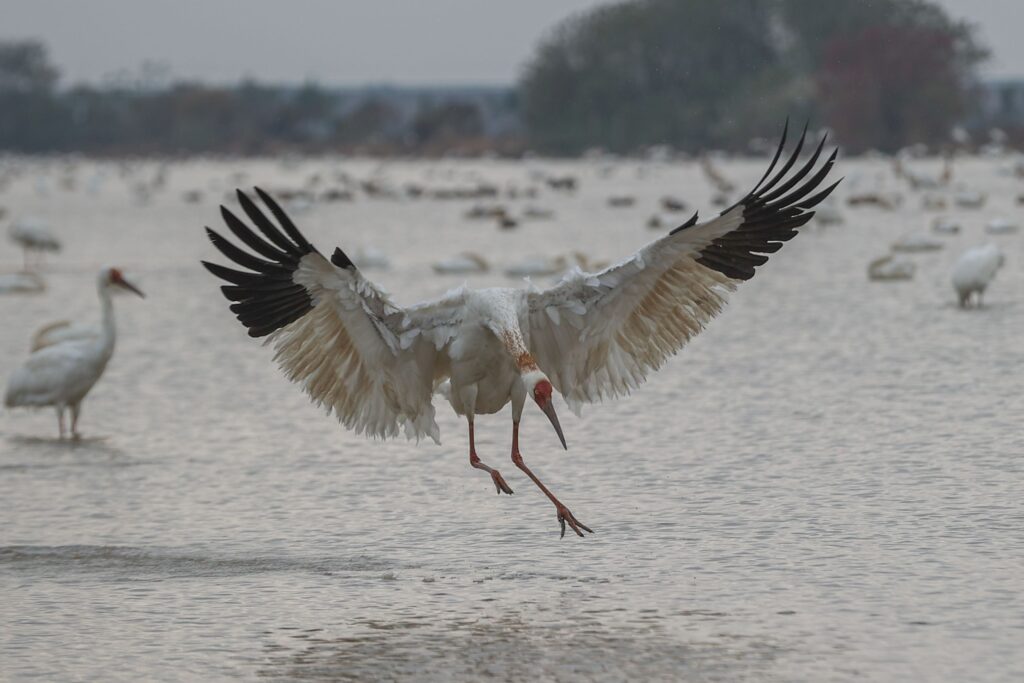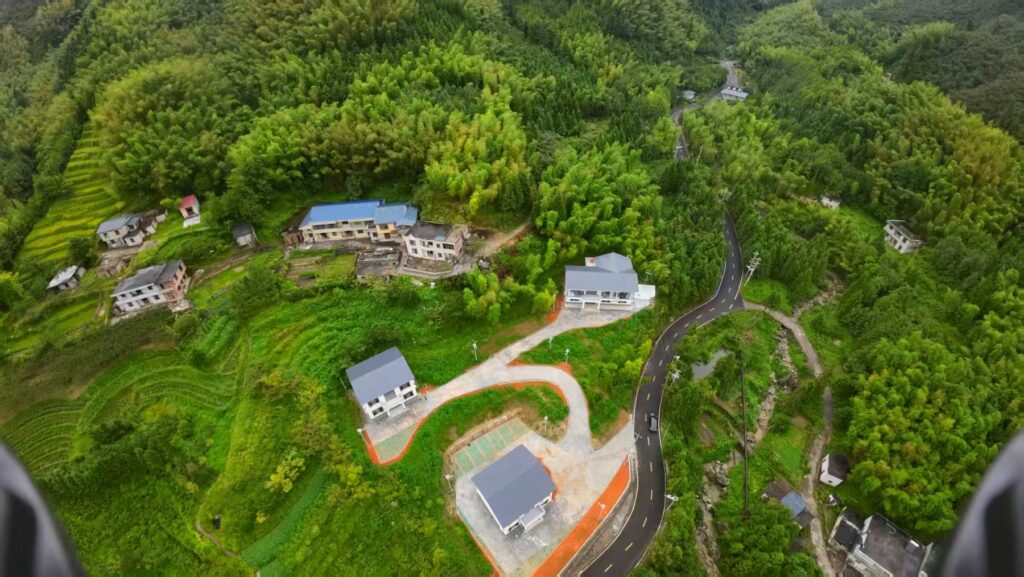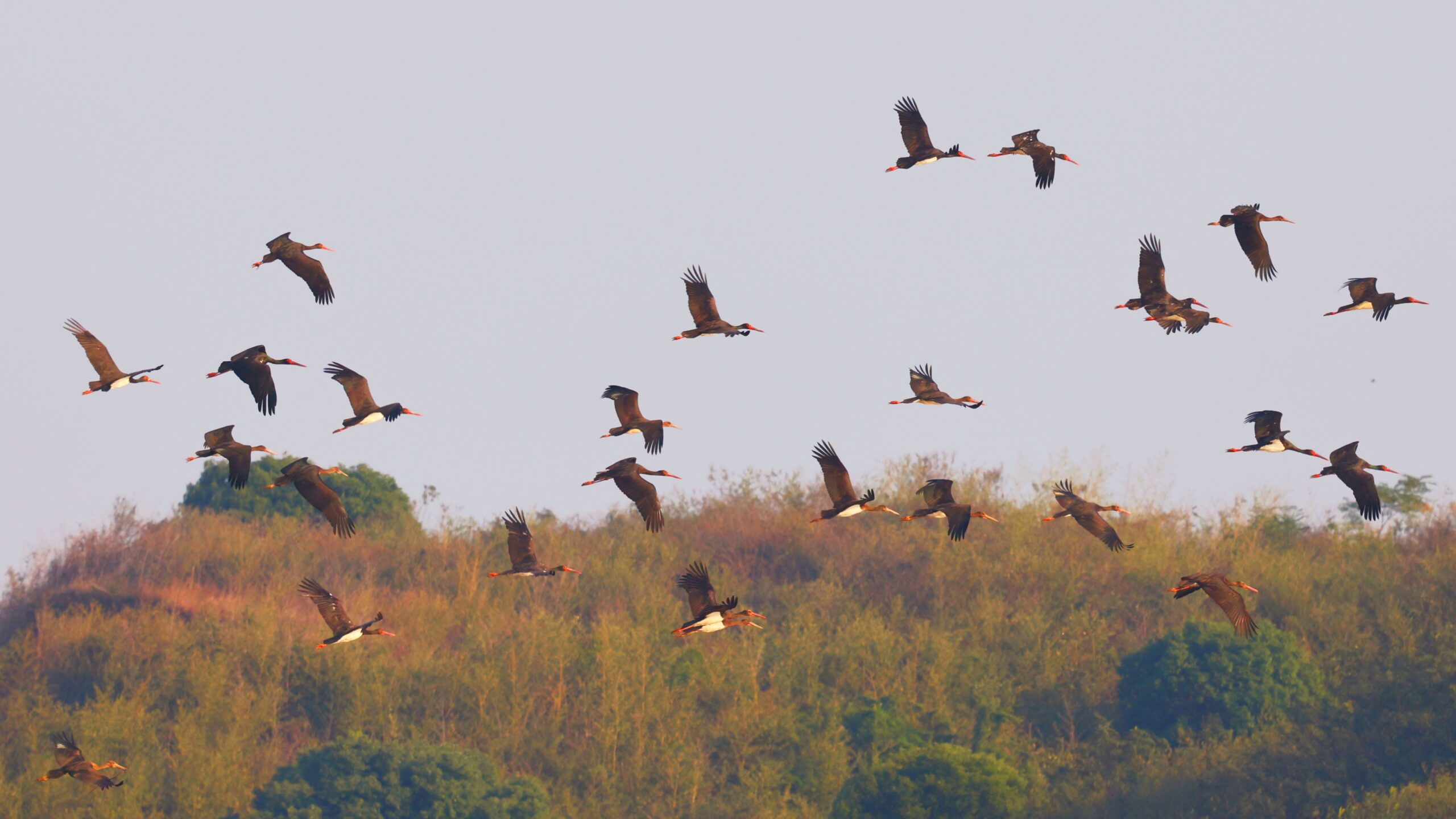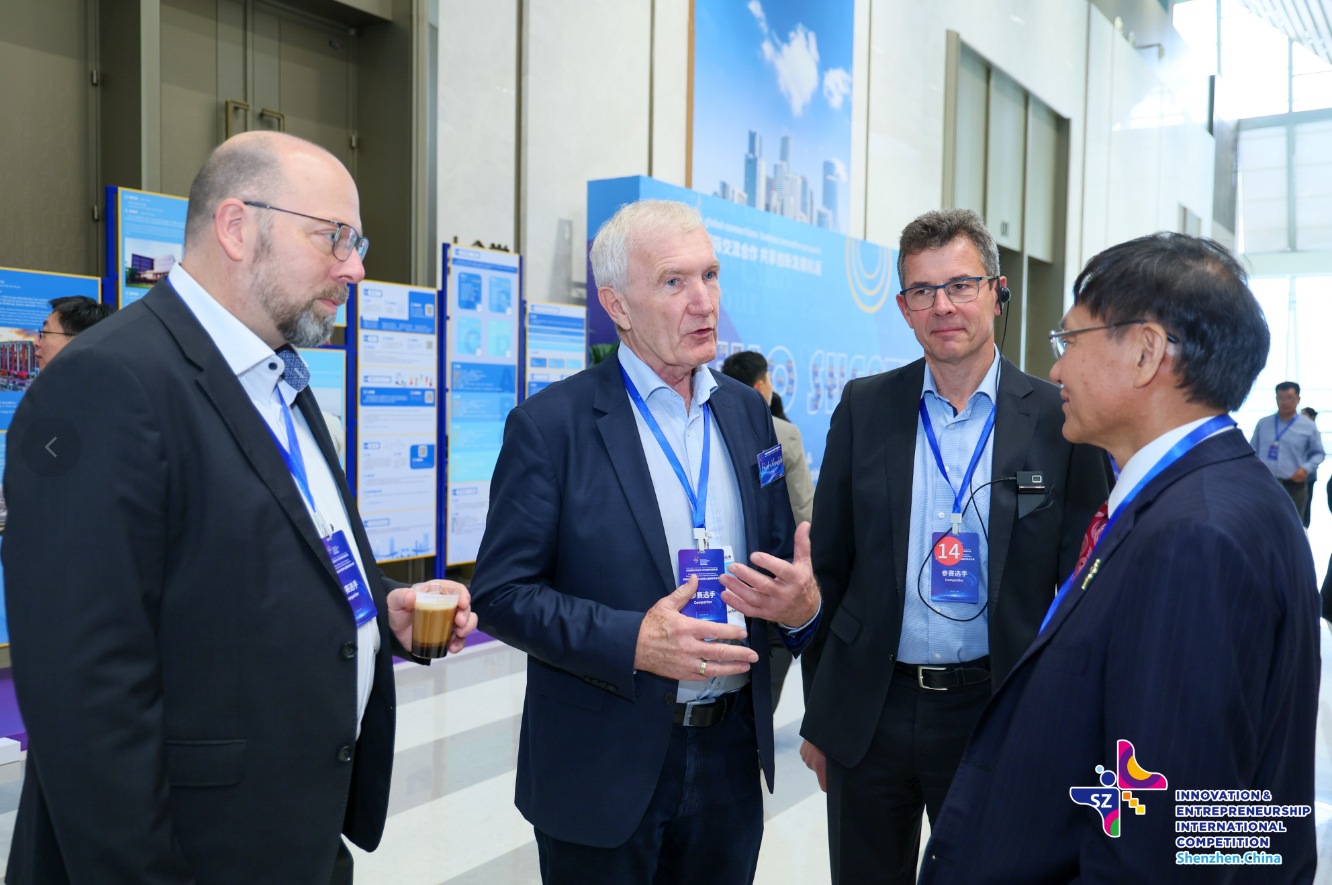Poyang Lake, China, emerges as a hotspot for migratory birds and eco-tourists. Latest conservation projects and birdwatching initiatives are boosting local communities.
On a crisp November morning, flocks of white-naped cranes soar over Poyang Lake, China’s largest freshwater lake. The golden reeds sway in the autumn breeze, and in nearby Wucheng Town, East China’s Jiangxi Province, birdwatching enthusiasts raise their cameras, eager to capture the perfect shot. It is a scene of natural beauty—and a story of thriving local communities.
Mohamed Manssouri, Director of FAO’s Investment Centre, visited the lake recently, praised the area: “China balances economic growth and environmental protection very well. Residents earn income through tourism, organic farming, and other initiatives. This model is worth learning.”

Small-Scale Wetlands, Big Environmental Impact
In Yongxiu County, 28 households share a small wetland wastewater treatment system. Using plants, microbes, and filtration materials, it cleans water without electricity. Manssouri explained: “Every resident contributes to improving the environment. This small system can serve as a model for other communities.”
Poyang Lake is also a crucial stopover for migratory birds. Since 2017, FAO has partnered with Jiangxi Province and the Poyang Lake National Nature Reserve to protect biodiversity while supporting local livelihoods. Carlos Aldeco, FAO Representative in China, said: “Conservation here benefits both nature and people. We hope to share Poyang Lake’s success with the world.”

Birdwatching Tourism Breathing New Life into Villages
Recent surveys show that bird species in the reserve have increased to 394, with diversity continuing to grow. During peak migration, Wucheng Town transforms into a hub for birdwatchers. Families, couples, and international visitors stroll along trails, spotting cranes and other migratory birds.
Communities have turned this “ecological flow” into real income. In Suichuan County, homestays and small guesthouses generate around 30,000 RMB (£3,300) per household annually. Forest-based businesses earn over 30 million RMB (£3.3 million) per year. Wucheng Town offers “birdwatching study tours” with tailored routes for children, couples, and photography enthusiasts, making each visit memorable.
Yu Penghai, a professional bird guide, explained: “I help visitors identify and photograph birds. Over the years, I’ve hosted enthusiasts from more than 30 countries.”
Official data shows that Wuyuan and Yugan counties welcomed more than 700,000 tourists in 2024, generating over 100 million RMB (£11 million). Zhou Jianwen, Deputy Director of Jiangxi’s Department of Culture and Tourism, added: “Birdwatching tourism turns ecological resources into real economic benefits and accelerates rural development.”

Sustainable Growth for Generations to Come
An industry expert emphasises the need to protect habitats while expanding tourism. Training centres, certified guides, and clear regulations ensure sustainability. With careful planning, birdwatching tourism can continue to boost local income while safeguarding Poyang Lake’s wetlands for generations.
Poyang Lake offers more than stunning views. It is a model of how environmental protection and community development can go hand in hand. From innovative small-scale wetland systems to thriving birdwatching tourism, this region shows the world that conservation can create prosperity.
Written by Chen Wang, additional reporting by CNS.
If you liked this article, why not read: China’s Green Development to Bring Greener Future











